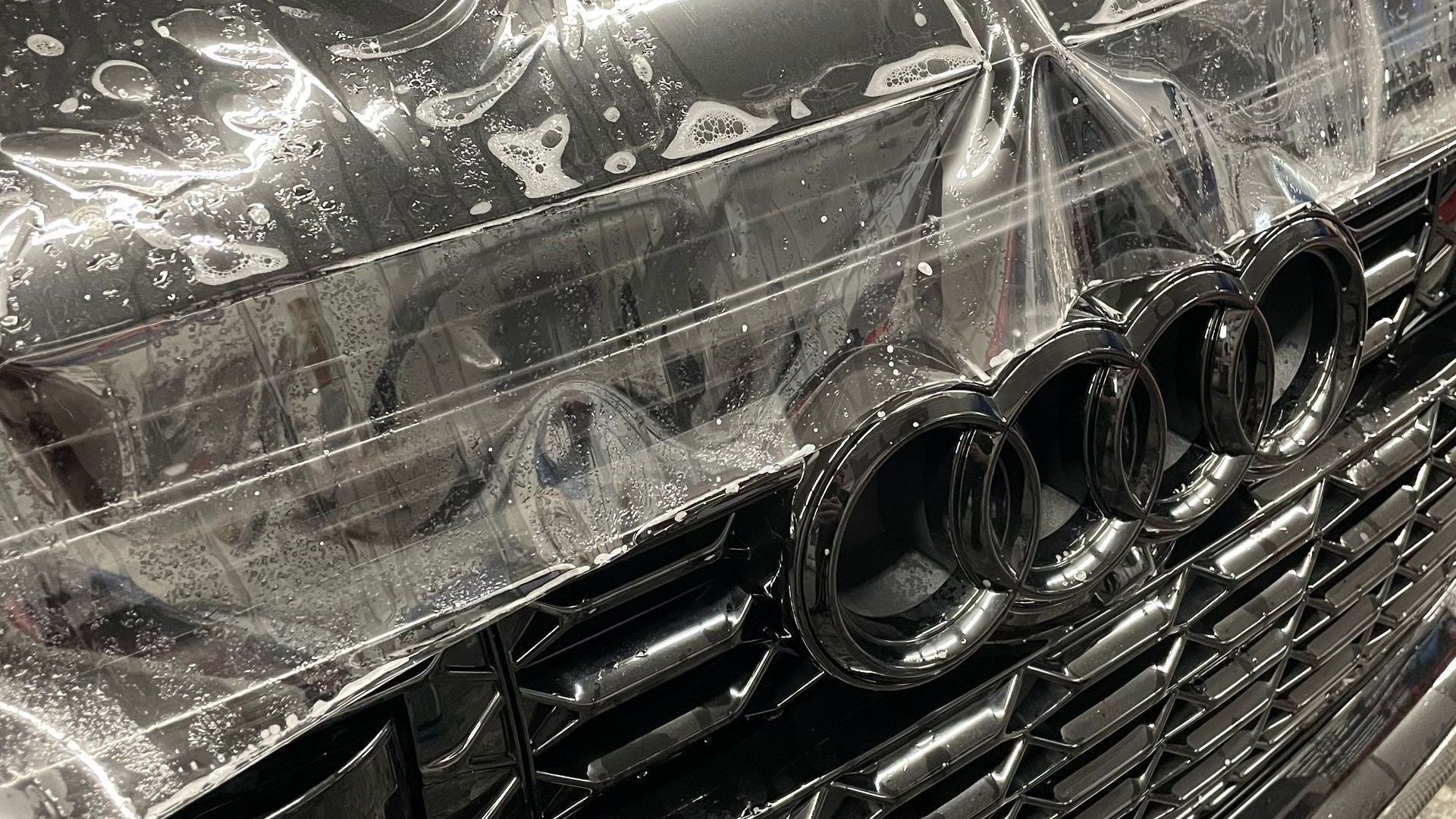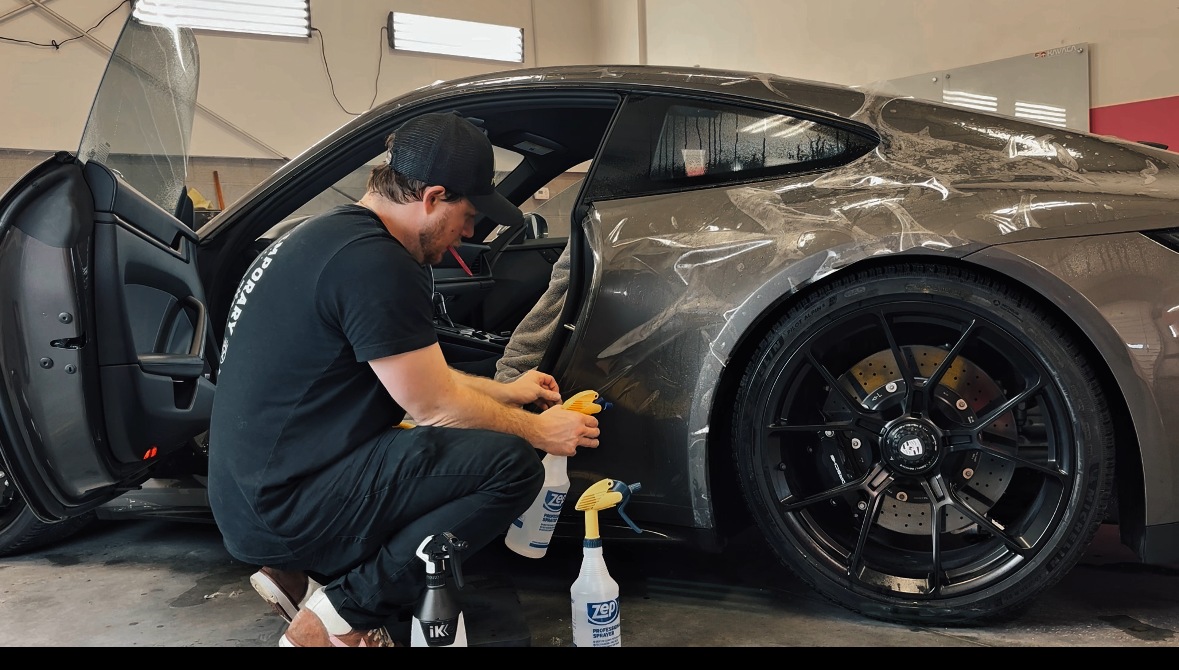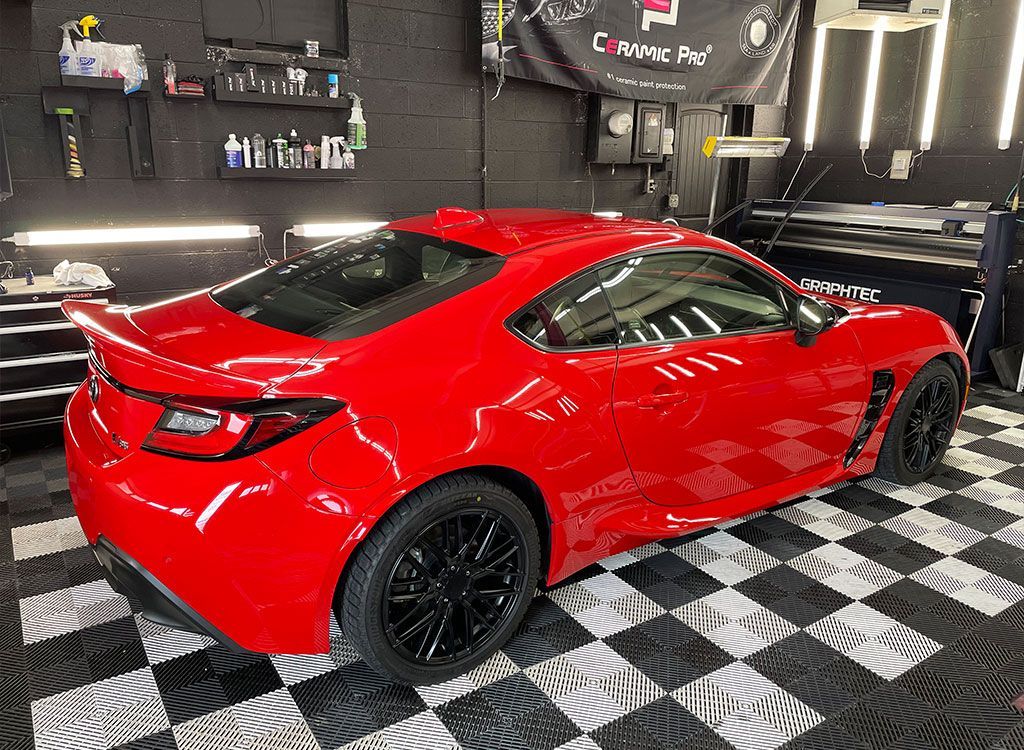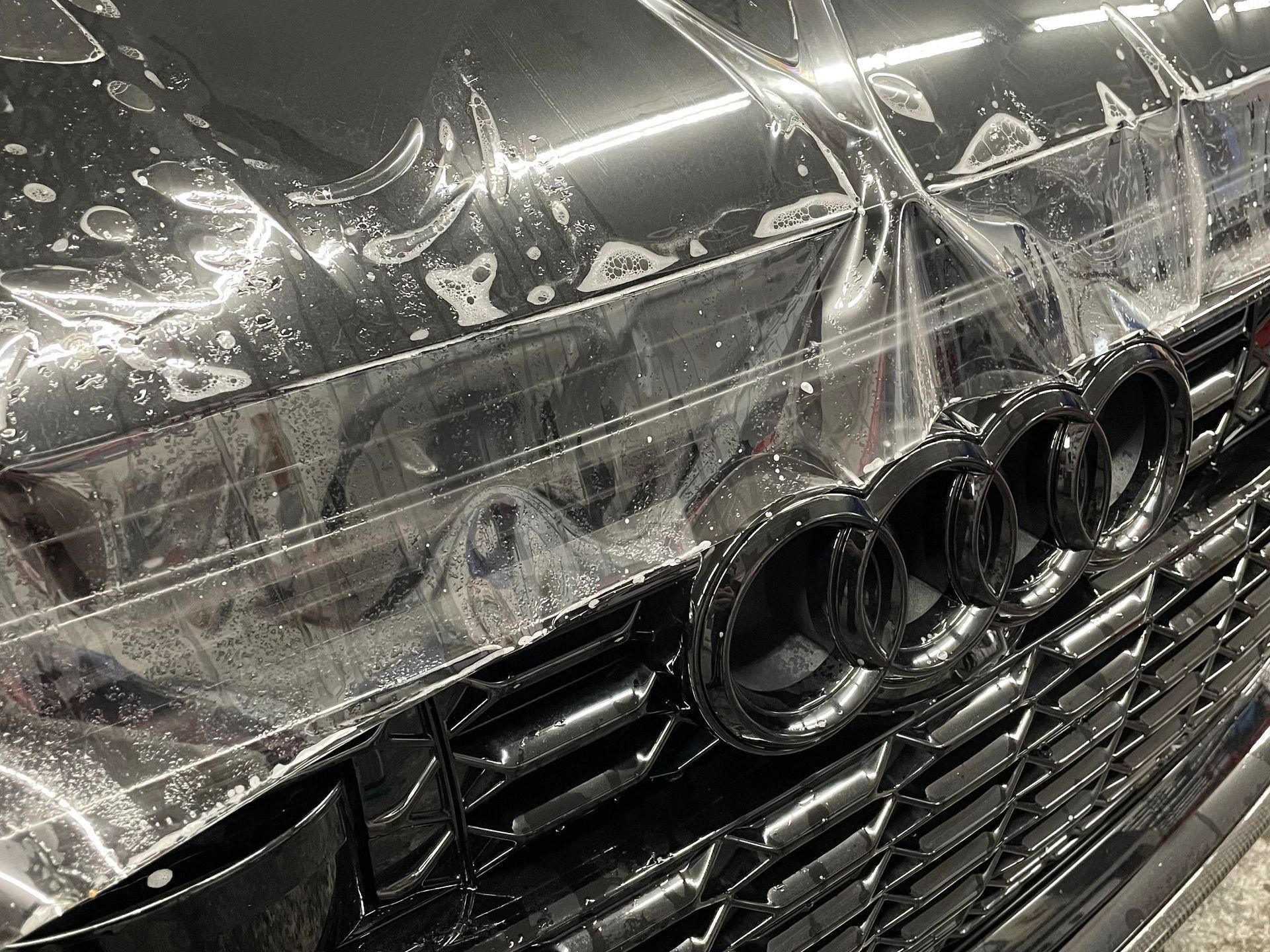Learn How to Properly Maintain Paint Protection Film (PPF) to Ensure Long-Lasting Performance and a Flawless Finish
When you invest in Paint Protection Film (PPF) for your vehicle, you're taking a crucial step toward preserving its appearance and value. However, like any investment, PPF requires proper maintenance to continue delivering the protection and shine it’s designed for. In this blog, we’ll guide you through expert tips on maintaining PPF, from safe washing methods to choosing the right cleaning products, ensuring your vehicle remains in pristine condition.
If you're a car owner in Lindon, UT, or the surrounding areas, keeping your vehicle looking flawless and well-protected is a top priority. With the right maintenance routine, your Paint Protection Film will not only preserve your vehicle’s finish but also extend the life of the film itself.
The Importance of Maintaining Your Paint Protection Film
Maintaining your Paint Protection Film (PPF) is essential for keeping your vehicle’s paintwork in pristine condition and ensuring the film continues to provide the highest level of protection. Without regular care, even the best PPF can lose its clarity, durability, and effectiveness.
Proper maintenance preserves the protective properties of the film, such as its hydrophobic surface, UV protection, and its ability to resist minor scratches and road debris. As your vehicle faces various environmental hazards daily, ensuring your PPF stays in optimal condition will not only protect your vehicle’s aesthetic appeal but also help maintain its long-term value.
How Does Paint Protection Film Work?
To better understand why maintenance is necessary, it's helpful to first look at how Paint Protection Film functions. PPF acts as a protective barrier for your vehicle’s paint, safeguarding it from a variety of damaging elements. The film is typically made from a durable, self-healing urethane material that can absorb impacts, resist abrasion, and deflect common road debris like stones, sand, and other harsh particles. Additionally, PPF provides UV protection, preventing oxidation and fading caused by prolonged exposure to the sun.
This high-performance material is designed to enhance the longevity of your vehicle’s finish, but it’s not impervious to damage. Over time, dirt, water, and other contaminants can build up on the surface, affecting the clarity and effectiveness of the PPF. For optimal performance, it’s crucial to maintain the film, ensuring that its protective capabilities stay intact.

Expert Tips for Maintaining Paint Protection Film in Lindon, UT
Let’s explore how to maintain PPF, ensuring it remains effective and keeps your vehicle looking like new.
1. Safe Washing Methods for PPF
Proper washing is one of the most important aspects of maintaining your Paint Protection Film. Here’s how to wash your car safely:
- Hand Wash Only: Always wash your vehicle by hand. Avoid automatic car washes with brushes or harsh cleaning methods, as they can damage the PPF.
- Use a Two-Bucket Method: Use one bucket for soapy water and another for rinsing your wash mitt. This prevents dirt and debris from being transferred back onto the vehicle’s surface.
- Microfiber Cloths: Opt for
soft microfiber cloths or
wash mitts. These are gentle on PPF and help prevent scratching.
- Avoid Pressure Washers: While pressure washers can seem like an easy option, they can cause damage if the water pressure is too high. If you use one, ensure it’s on a low setting and keep it at a safe distance.
Additional Washing Tips:
- Frequency: Ideally, you should wash your vehicle every two weeks or whenever it’s visibly dirty. Regular cleaning prevents dirt from accumulating and damaging the PPF.
- Drying: After washing, dry the surface with a clean, soft microfiber towel. This prevents water spots and keeps the finish streak-free.
By using these safe washing techniques, you will protect the integrity of your PPF and maintain its clear, glossy finish.
2. Choose the Right Cleaning Products
Not all cleaning products are created equal. When caring for PPF, it’s essential to choose the right products to prevent damage.
- PH-Neutral Soap: Always use a
pH-neutral car wash soap. This will effectively clean your vehicle without harming the PPF’s surface or causing it to degrade over time.
- Avoid Abrasive Cleaners: Harsh chemicals and abrasive cleaners can strip away the protective layer of your film. Always avoid
abrasive scrubbing pads or products that contain
solvents.
- PPF-Specific Sprays: Look for
PPF-friendly spray products designed to maintain the film’s clarity and hydrophobic properties. These sprays help maintain the protective layer and enhance water repellency.
Additional Cleaning Tips:
- Spot Clean: If you notice stubborn spots such as bird droppings, tree sap, or bug residue, clean them promptly with a
mild soap solution or a
PPF-safe cleaner. Left untreated, these can stain the film or degrade its protective layer.
- Avoid Waxing: PPF is designed to protect your vehicle’s paint, so waxing is not necessary. Waxing can leave residues that may interfere with the film’s hydrophobic properties.
Using the right products will help extend the life of your Paint Protection Film and keep it in top shape.
3. Regular Maintenance and Inspections
Routine maintenance is essential to ensure your PPF continues to protect your vehicle effectively. Follow these steps to maintain your PPF:
- Regular Inspections: Check the edges and surfaces of your PPF regularly for signs of
peeling, lifting, or
bubbling. Early detection of these issues allows you to address them promptly and prevent further damage.
- Decontamination: Every 6-12 months, thoroughly decontaminate your PPF to remove road tar, tree sap, and other debris.
Iron removal products can be used to help eliminate iron particles that may have bonded to the film.
- Reapply Protection: If necessary, consider reapplying a
ceramic coating on top of your PPF for additional protection and
hydrophobic benefits.
More on Inspections:
- Look for Edging Issues: Ensure the edges of your PPF are properly sealed. The edges are often where dirt and moisture can get trapped, causing the film to lift or peel. Regularly inspect and correct any potential issues.
- Look for Discoloration: Over time, some PPFs may develop a yellowish tint or discoloration. If this happens,
professional cleaning or a fresh
ceramic coating application might be needed to restore its original look.
4. Protecting Your PPF from Environmental Factors
PPF is designed to withstand environmental contaminants, but extra care can go a long way in preserving its integrity.
- Avoid Direct Sun Exposure: While PPF provides UV protection, excessive exposure to the sun can still cause long-term degradation. If possible, park your vehicle in a
shaded area or use a
car cover.
- Wash Off Contaminants Promptly: If bird droppings, tree sap, or insects get on your vehicle, wash them off as soon as possible. Leaving these contaminants on the PPF for long periods can cause staining or damage.
Additional Environmental Protection Tips:
- Pollen & Tree Sap: During certain seasons, tree sap and pollen can be problematic. It’s important to
remove these contaminants immediately to prevent them from bonding to the PPF.
- Car Covers: Using a
car cover can help protect your vehicle from environmental contaminants like bird droppings, tree sap, or dirt while keeping the PPF protected.
By minimizing the impact of environmental factors, you can ensure your PPF remains effective and continues to protect your vehicle.
5. Professional Maintenance Services
While DIY maintenance is essential, there are also times when you should seek professional help:
- PPF Installation and Removal: If the PPF becomes damaged or is ready for replacement, it’s best to leave the removal and replacement process to professionals.
- Expert Cleaning and Treatment: A professional detailer can provide
deep cleaning and
maintenance treatments that help rejuvenate your PPF and restore its protective properties.
When to Schedule Professional Services:
- Film Replacement: If your PPF has sustained significant damage or if it has aged beyond its performance potential, consider having it replaced by a professional to ensure top-notch protection.
- Ceramic Coating Application: If you’ve had your PPF for a while, it may be a good idea to
reapply a ceramic coating to boost its hydrophobic properties and enhance its durability.
A professional’s touch can help maintain your optimal performance of PPF.
6. Regular Detailing and Inspection of Your PPF
Regular detailing of your vehicle is essential to maintain the effectiveness and longevity of your Paint Protection Film (PPF). Detailing goes beyond just a basic wash—it involves thorough cleaning, inspection, and restoration of your vehicle’s exterior to ensure it continues to perform at its best.
A regular detailing routine ensures that dirt, contaminants, and pollutants that could degrade your PPF are removed before they cause damage. PPF can trap contaminants such as dirt and water spots, which can eventually affect its ability to protect your vehicle. When your car is detailed, these particles are removed, ensuring your PPF stays clear and that the underlying paintwork is protected.
Here’s why regular detailing is critical:
- Thorough Cleaning: Over time, road grime, tree sap, bird droppings, and other contaminants can settle on your PPF and lead to
surface damage or discoloration. Regular detailing ensures these contaminants are removed safely, preventing them from affecting the clarity and performance of the film.
- Inspection for Wear and Tear: During a detail, the professional detailer will inspect your PPF for signs of
damage, such as
bubbling,
lifting, or
edge wear. Early detection of these issues allows for timely repairs, which helps to maintain the film’s protective properties.
- Restoration of Shine and Protection: As part of the detailing process,
polishing or
ceramic coating may be applied over the PPF to restore its
glossy finish and
hydrophobic properties. This helps the film to repel dirt and water more effectively, ensuring your vehicle stays cleaner for longer.
Additional Detailing Insights:
- Monthly or Quarterly Service: Ideally, schedule a detailing service every
1 to 3 months, depending on the conditions in which you drive. Frequent detailing will help keep your
PPF in peak condition, while also maintaining the
overall appearance of your vehicle.
- Check for Any Visible Defects: During the detailing process, a trained professional can identify any
small issues with the PPF that may need fixing. This could include checking for any imperfections that could affect the protection it provides.
- Preserve Vehicle Value: Regular detailing helps
maintain your vehicle's value, ensuring that both the exterior paint and
PPF are in top condition when you decide to sell or trade in your car.
By ensuring regular detailing and a consistent inspection process, your PPF will continue to provide its intended protection for the long haul, ensuring your vehicle remains as beautiful and well-protected as the day it was first applied.

How Proper Maintenance Extends the Life of Your PPF and Vehicle
By maintaining your Paint Protection Film, you not only protect your vehicle’s paintwork but also extend the life of the film itself. Regular care ensures that the PPF’s hydrophobic properties remain effective, preventing contaminants from bonding to the surface. Additionally, keeping the PPF clean and in good condition preserves your vehicle’s aesthetic appeal, keeping it looking like new for years to come.
Proper maintenance also helps to avoid costly repairs and ensures that your vehicle maintains its high resale value. In addition, a well-maintained PPF can help protect the underlying paint from the effects of UV rays, acid rain, bird droppings, and other environmental factors.
Moreover, regular maintenance helps avoid discoloration and damage from contaminants that can penetrate and degrade the protective film, ensuring that your investment in PPF remains as effective as the day it was applied.
How Long Does Paint Protection Film Last?
One of the biggest advantages of PPF is its long-lasting nature. A high-quality Paint Protection Film can last anywhere between 5 to 10 years with proper care. However, various factors, including the quality of the film, maintenance routines, and the environment in which your vehicle is driven, can influence its lifespan.
What Can Affect the Lifespan of PPF?
- Weather and Climate Conditions: Harsh UV rays, excessive heat, or extreme cold can affect the longevity of the PPF. Always consider the climate you live in and the type of conditions your vehicle regularly faces.
- Driving Conditions: Vehicles exposed to more
debris,
road salt, or
off-roading can see faster degradation of the film. If you frequently drive in harsh conditions, consider more frequent maintenance.
With the right care, you can maximize the performance and longevity of your Paint Protection Film, ensuring your car stays protected and pristine for years.
Conclusion
Maintaining Paint Protection Film is essential for preserving the appearance and value of your vehicle. Whether you’re driving around Lindon, UT, or beyond, following these expert tips will ensure that your PPF continues to protect your car from everyday wear and tear. With proper care, your vehicle’s PPF will maintain its flawless finish, offering long-lasting performance and peace of mind.
If you’re ready to keep your vehicle protected and looking pristine, reach out to Stokes Auto Spa for professional PPF installation and maintenance. Contact us today to schedule a consultation or learn more about our premium paint protection services.




